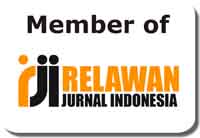Proposing a Typology of Ludification as a Translation Technique for PC, Console, Mobile and Online Games
Abstract
Translation technique typology indicates a lack of specific technique to evoke playful nuance – ludification. We argue that ludification might also serve as a translation technique in video game translation context. This research attempts to prove the presence of ludification translation technique. To do so, we analyzed nine PC, console, mobile, and online games from various genres and developers under the umbrella of qualitative design. The theories of lability and merrines by Huizinga, ludification of digital media by de Lange et al, and skopos by Reiss and Vermeer were applied in the analysis. The findings reveal that ludification as a translation technique is existent. This type of translation technique is made possible due to the carte blanche of video game translators. The findings also indicate that ludification as a translation technique has a distinctive typology, making it different from the other translation techniques. First, it breaks translation rules and standards to generate contextual merriness. Second, it has explanative and expressive functions. Third, it has subtypes, namely emojization, referencing, and para-localization. This study implies that the scholars of translation studies might apply this typology not only on game translation context but also audiovisual context like subtitling especially fansub, where carte blanche and creativity are required to deal with the space restriction.
Keywords
Full Text:
PDFReferences
Baños, R. (2020). Fandubbing. In The Palgrave Handbook of Audiovisual Translation and Media Accessibility (pp. 209–226).
Chaume, F. (2004). Film Studies and Translation Studies: Two Disciplines at Stake in Audiovisual Translation. Meta, 49(1), 12–24. https://doi.org/10.7202/009016ar
Consalvo, M. (2013). Unintended Travel: ROM Hackers and Fan Translations of Japanese Video Games. In Gaming Globally Production, Play, and Place (pp. 119–138). Palgrave Macmillan US.
Conway, S. (2010). Hyper-ludicity, contra-ludicity, and the digital game. Eludamos. Journal for Computer Game Culture, 4(2), 135–147.
Cronin, M. (1995). Altered States: Translation and Minority Languages. TTR : Traduction, Terminologie, Rédaction, 8(1), 85–103. https://doi.org/10.7202/037198ar
Cronin, M. (2007). Keeping One’s Distance: Translation and the Play of Possibility. TTR : Traduction, Terminologie, Rédaction, 8(2), 227–243. https://doi.org/10.7202/037225ar
Ding, N., Yang, Z., Li, S., & Zhang, A. (2021). Where translation impacts: The non-professional community on Chinese online social media – A descriptive case study on the user-generated translation activity of Bilibili content creators. Global Media and China, 205943642110006. https://doi.org/10.1177/20594364211000645
Đorđević, J. (2017). Translation techniques revisited: The applicability of existing solutions in non-literary translation. FACTA UNIVERSITATIS-Linguistics and Literature, 15(1), 35–47.
Fawcett, P. (2003). The manipulation of language and culture in film translation. In Apropos of ideology: Translation studies on ideology-ideologies in translation studies (pp. 145–163).
Fernández Costales, A. (2012). Exploring translation strategies in video game localization. MonTI. Monografías de Traducción e Interpretación, 4, 385–408. https://doi.org/10.6035/MonTI.2012.4.16
Frissen, V. (Ed.). (2015). Playful identities: The ludification of digital media cultures. Amsterdam University Press.
Gambier, Y. (2010). Translation strategies and tactics. In Handbook of Translation Studies (Vol. 1, pp. 412–417). John Benjamins Publishing Company.
Guyker Jr., R. W. (2016). Myth in translation: The ludic imagination in contemporary video games [Dissertation]. Pacifica Graduate Institute.
Huizinga, J. (2014). Homo ludens: A study of the play-element in culture.
Inose, H. (2012, June 10). Scanlation-What Fan Translators of Manga Learn in the Informal Learning Environment. The Proceedings Book of ISLC 2012, 201. International Symposium on Language and Communication: Research Trends and Challenges, IICS (Institute of Language and Communication Studies), Izmir University.
Korhonen, H., Montola, M., & Arrasvuori, J. (2009, October). Understanding playful user experience through digital games. International Conference on Designing Pleasurable Products and Interfaces. International Conference on Designing Pleasurable Products and Interfaces, Compiegne University of Technology.
Krings, H. P. (1986). Translation Problems and Translation Strategies of Advanced. In Interlingual and intercultural communication: Discourse and cognition in translation and second language acquisition studie (pp. 263–272). Gunter Narr Verlag.
Liang, M.-Y. (2012). Foreign ludicity in online role-playing games. Computer Assisted Language Learning, 25(5), 455–473. https://doi.org/10.1080/09588221.2011.619988
Lopes, C. (2005). Ludicity – a theoretical term. Sixth Annual Convention of Media Ecology Association, 1–10.
Mangiron, C., & O’Hagan, M. (2006). Game Localisation: Unleashing imagination with ‘restricted’translation. JoSTrans : The Journal of Specialised Translation, 6(1).
Massidda, S. (2015). Audiovisual Translation in the Digital Age. Palgrave Macmillan. http://www.myilibrary.com?id=690618
Molina, L., & Hurtado Albir, A. (2004). Translation Techniques Revisited: A Dynamic and Functionalist Approach. Meta, 47(4), 498–512. https://doi.org/10.7202/008033ar
Nord, C. (2003). Proper Names in Translations for Children: Alice in Wonderland as a Case in Point. Meta, 48(1–2), 182–196. https://doi.org/10.7202/006966ar
Nord, C. (2018). Translating as a purposeful activity: Functionalist approaches explained. http://search.ebscohost.com/login.aspx?direct=true&scope=site&db=nlebk&db=nlabk&AN=1714814
Petrucci, P. (2012). The translation of cinematic discourse and the question of character equivalence in Talk to me. Multilingua, 31(2–3). https://doi.org/10.1515/multi-2012-0011
Purnomo, SF. L. A., Nababan, M. R., Riyadi, S., & Kristina, D. (2016). Game time: Revisiting ludic linguistics for video game analysis. Prasasti, 689–694.
Purnomo, SF. L. A., Untari, L., Purnama, SF. L. S., Asiyah, N., Umam, R. K., Sartika, Y., Anggraini, N., & Inderasari, E. (2021). Ludic Adaptation: Can We Babyfy, Chibify, Bambify, or Cherubify a Literary Text for Younger Audiences? GEMA Online® Journal of Language Studies, 21(1), 89–109. https://doi.org/10.17576/gema-2021-2101-06
Pyae, A. (2018). Understanding the role of culture and cultural attributes in digital game localization. Entertainment Computing, 26, 105–116. https://doi.org/10.1016/j.entcom.2018.02.004
Reiss, K., & Vermeer, H. J. (2014). Towards a General Theory of Translational Action: Skopos Theory Explained. Taylor and Francis.
Schules, D. M. (2012). Anime fansubs: Translation and media engagement as ludic practice [Doctor of Philosophy, University of Iowa]. https://doi.org/10.17077/etd.asy4on82
Spradley, J. P. (2016). Participant observation. Waveland Press.
DOI: http://dx.doi.org/10.31332/lkw.v7i1.2338
Copyright (c) 2021 SF. Luthfie Arguby Purnomo, SF. Lukfianka Sanjaya Purnama, Lilik Untari, Arynaa Azzahra, Nadya Octaviana Pramana Putri

This work is licensed under a Creative Commons Attribution-ShareAlike 4.0 International License.
Langkawi: Journal of The Association for Arabic and English indexed by:


















.png)
.png)

.png)
2.png)








